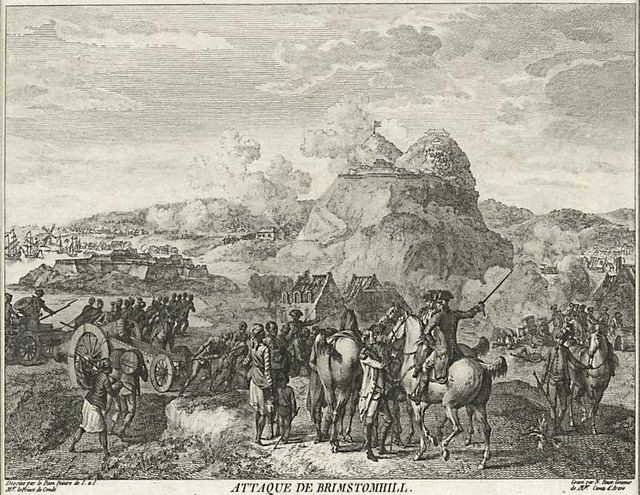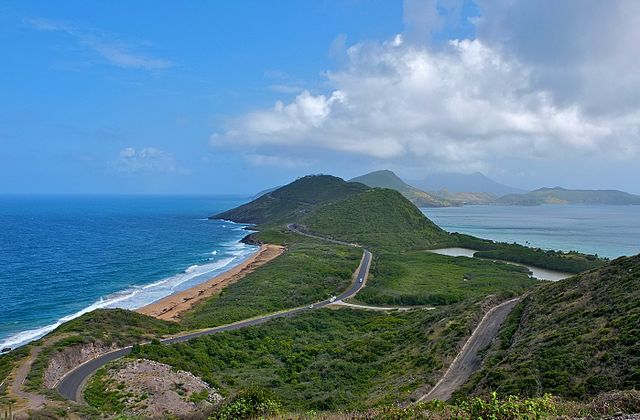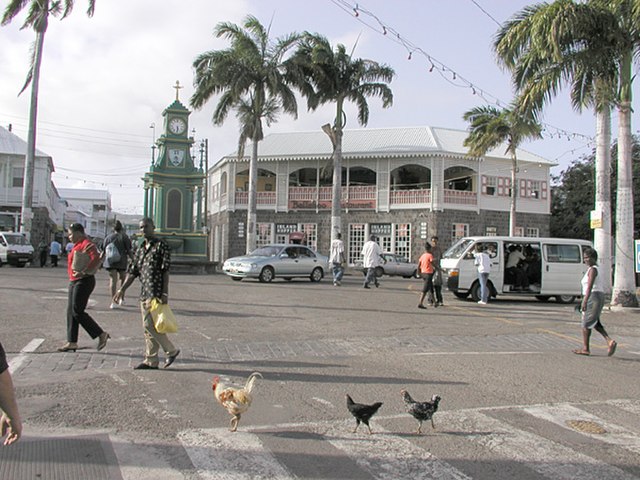The French invasion of Saint Kitts also known as the siege of Brimstone Hill, from 19 January–13 February 1782, was a part of the American Revolutionary War. After landing on Saint Kitts, the French troops of the Marquis de Bouillé stormed and besieged the fortress of Brimstone Hill. After a month of battle, the heavily outnumbered and cut-off British garrison surrendered. The Comte de Grasse, who delivered de Bouillé's troops and supported the siege, was outmanoeuvred and deprived of his anchorage by Admiral Samuel Hood. Even though Hood's force was inferior by one-third, de Grasse was beaten off when he attempted to dislodge Hood. Hood's attempts to relieve the ongoing siege were unsuccessful, and the garrison capitulated after one month.
About a year later, the Treaty of Paris restored Saint Kitts and adjacent Nevis to British rule.
The Fortress of Brimstone Hill, UNESCO World Heritage site.
Saint Kitts, officially Saint Christopher, is an island in the West Indies. The west side of the island borders the Caribbean Sea, and the eastern coast faces the Atlantic Ocean. Saint Kitts and the neighbouring island of Nevis constitute one country: the Federation of Saint Kitts and Nevis. Saint Kitts and Nevis are separated by a shallow 3-kilometre (2 mi) channel known as "The Narrows".
Siege of Brimstone Hill, 1782, as described by an observer in a French engraving titled "Attaque de Brimstomhill".
View from Sir Timothy's Hill
Southeast Peninsula (Saint Kitts). The island on the left is Nevis.
Downtown Basseterre





